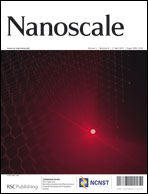A SnO2@carbon nanocluster anode material with superior cyclability and rate capability for lithium-ion batteries†
Abstract
A nanocluster composite assembled by interconnected ultrafine SnO2–C core–shell (SnO2@C) nanospheres is successfully synthesized via a simple one-pot


 Please wait while we load your content...
Please wait while we load your content...